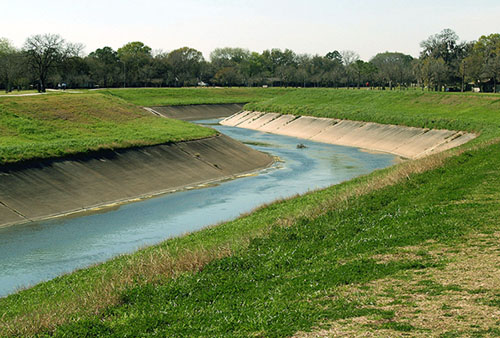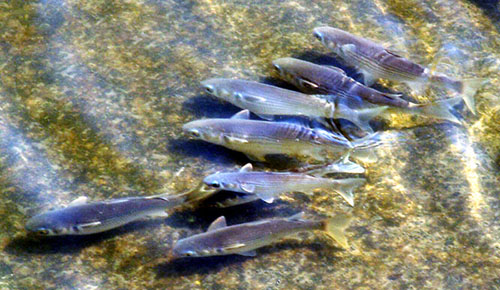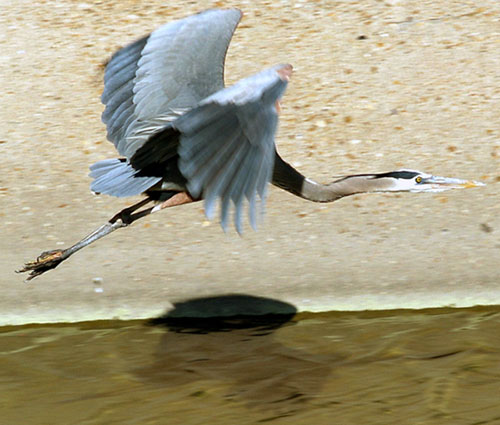Backwater Curves
Today, we watch flowing water. The University of Houston's College of Engineering presents this series about the machines that make our civilization run, and the people whose ingenuity created them.
We like walking along our bayou, watching birds and placid water. The terrain is very flat here in Houston and bayous carry water runoff to the sea, fifty miles away. A bayou is a water course that runs slowly in flat land. Unlike a river, it fills up after a rain, and runs low in dry weather. A river runs through; it carries water from far away and is less affected by local weather.

But Houston is only 43 feet above sea level. And we depend on our bayous to clear away water after a rain. So engineers have had them cut them into wide V-shaped channels, often lined with concrete in the lower portion of the V.
When we first came to Houston, flooding was a greater threat than it now is. Engineers have gradually widened and cleared our bayous. Now they carry water away very quickly after storms.
So, as we look at the flat, slow-moving water in the lower portion of that V-notch on a sunny day, it never occurs to us that water on the upstream side to the right is higher than it is downstream on the left. But, of course, it has to be. Otherwise, it wouldn't move. After all, water flows from high to low.
Civil engineers talk about something called a backwater curve. Imagine a graph showing a stream in a side view, but horizontally compressed a thousand to one. Then the surface would clearly slope. That slope is steeper where the channel narrows, or where a lot of friction is offered by aquatic vegetation or rocks. Where it's wide and smooth, the slope is much less.
 The trick in a big city like Houston, where it's imperative to clear water out after rainstorms, is to keep the slope uniform. So engineers study those compressed curves and do all they can to keep them smooth. But strange things turn up in a backwater curve.
The trick in a big city like Houston, where it's imperative to clear water out after rainstorms, is to keep the slope uniform. So engineers study those compressed curves and do all they can to keep them smooth. But strange things turn up in a backwater curve.
For example, a particular flow of water in a channel can satisfy Newton's laws in two ways. Its movement can be fast and shallow or slow and deep. If it runs fast and shallow, all it takes is a disturbance -- a rough patch on the bottom -- to make it suddenly increase depth. The flow is the same after that hydraulic jump, but now it moves slowly.
You've seen those jumps in your sink when water flows from the faucet and spreads outward in the basin. You've noticed a ring where the outward flow makes such a jump. (Try it if you haven't.) That behavior spells trouble in a backwater curve because fast moving water can scour out a channel and damage it. We want our bayous to carry water as fast as possible in the slow-deep mode.
The engineers are up to more things here. Decades ago, our bayou smelled of raw sewerage. Now a large water treatment plant, nearby. Now we watch fish feeding in the waters. We see great blue herons and cormorants. It's a lovely place. Well, it should be. For it really is a lifeline in our great sprawling metropolis.
I'm John Lienhard, at the University of Houston, where we're interested in the way inventive minds work.
See, e.g. F. M. Henderson, Open Channel Flow. (New York: Macmillan Co., 1966.)
My thanks to Keh-han Wang, and Dennis Clifford, UH Civil Engineering Dept., for their invaluable counsel. Photos by JHL

